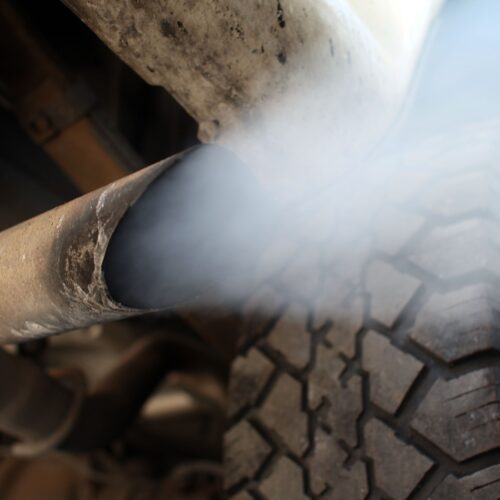We moved our family to Costa Rica. We really tried to make it work but returned to Oregon after 3 months.

Bkamprath/Getty Images/iStockphoto
- We adopted a child in Oregon who had Costa Rican heritage that we wanted to be sure to celebrate.
- So, when she was 4, we moved to Costa Rica. We struggled and returned to the US after a few months.
- We learned ways to embrace her roots without having to leave the community we'd built in the US.
In 2008, my husband, Jonathan, and I adopted our daughter from Oregon's foster-care system when she was 18 months old.
The Department of Human Services mandated months of preliminary classes, many of which focused on how best to celebrate an adopted child's ethnicity. I took this directive very seriously.
Our kid's birth mother had been born in Costa Rica and adopted by a US couple two decades before she got pregnant and relinquished her infant to the state.
I knew enough about the emotional wounds adopted children can face to believe I should take drastic measures to try to mitigate any pain my own girl could experience.
When she was 4 years old, I had an even bigger idea for how we might be able to do so: We could move to Costa Rica. It would be an adventure, I thought, a perfect escape from the cold, rainy Northwest winters in our tiny Oregon cottage!
Call it a revelation or call it a midlife crisis, but my husband took a six-month leave of absence, I quit my job, and we found a short-term renter who would care for our cats until we found a new house to purchase.
In December 2011, we moved from the US to Playas del Coco with two backpacks and a bag of kids' science books.
We spent weeks trying to embrace the local culture and fall in love with our new home

Jonathan B. Smith
For the first few weeks in Costa Rica, we spent our days at the beach or taking the public bus throughout the Pacific side of the country, searching for the ideal place to put down roots.
However, we hadn't prepared for Christmas. We'd spent past holidays at my mother's house in California, drinking eggnog and opening presents.
In an unfamiliar country, Jonathan and I wandered through the aisles of the local supermarket looking for last-minute small, portable gifts for our daughter.
We picked up a makeshift cardboard tree and tried to feel merry without our handmade stockings hanging over the fireplace and our 6-foot tree covered in ornaments rich with memories.
Our new condo was still empty and felt soulless, so we wandered out for some classic Christmas cheer. We found ourselves on the beach clutching cups of shaved ice in sweaty palms while red-faced children in suits and taffeta dresses sang and swayed on hot sands to "Let It Snow."
"I miss my friends," our small daughter whimpered. "I miss our cats."
I missed our pets and my own friends horribly, but we'd resolved to surround her with the people, music, and traditions of her birth mother's country.
Instead of commiserating, I suggested we head out for dinner.

Beth Harvey/Shutterstock
We sat down to plates of gallo pinto — Costa Rica's ubiquitous rice-and-bean dish — and pan-fried plantains in a pastel-painted room full of empty tables and a neon-purple Christmas tree.
We hadn't met any other families yet, so we walked home alone, pointing out holiday light displays on our new neighbors' houses and trying to feel celebratory.
For another seven weeks, we traveled the country by bus and occasionally in a rented Jeep. We spent most of our time in Playa Samara, where we enrolled our daughter in a bilingual kindergarten.
We roamed the beautiful beaches, kayaked on rivers, and introduced our child to the animals, birds, trees, and insects of her birth mother's country. She met local kids of all ages and shopkeepers who pinched her cheeks and slipped her complimentary bags of fried plantains.
Still, our daughter was miserable. "I want to go home!" she said daily.
After 3 months in Costa Rica, we headed back to the US
Early in March, Jonathan turned to me, red-faced and sweating. "It's broiling by eight in the morning," he said. "Makes me almost miss winter in Oregon."
"I do miss winter in Oregon," I replied. "I miss the rain and the cold. I think I even miss the mud!"
We walked down to the beach, our daughter riding his shoulders, and crossed a rickety little bridge to a new restaurant we'd heard about.
Outside, we stopped and stared. Oregon Ducks flags — the green and yellow emblems in our college town back home — hung everywhere. The owner, we learned, had relocated from our part of the world.
As our child eyed the flags wistfully over yet another bowl of gallo pinto, I stared out at the dark ocean. This felt like a sign that Oregon was our perfect place, and my husband agreed.
By mid-month, we'd moved back to the US. We acknowledged our change of heart with chagrin, but our friends and neighbors welcomed us back with joy.
Now that we were home, I studied what other adoptive parents did to honor their children's culture — everything from special summer camps to weekly dinners, church services, and festivals. We set about creating a community of kids who looked like our daughter and began taking Spanish classes.
There were less extreme ways, I found, to celebrate our daughter's heritage and bolster her against the inevitable sorrow that can come with being adopted. We didn't need to relocate 4,000 miles away from all that she loved.
The next Christmas, Jonathan hung our stockings over the fireplace in a cottage that now struck me as charming, shaded by graceful firs and cedars.
We sewed catnip mice and tucked them into small stockings. We set up our big tree and excitedly hung the ornaments we'd been exchanging for years.
Then, I led my daughter into the kitchen where I got out the stepstool and the cast-iron pan. "Open this can of black beans," I told her. "We're going to learn to make gallo pinto."


